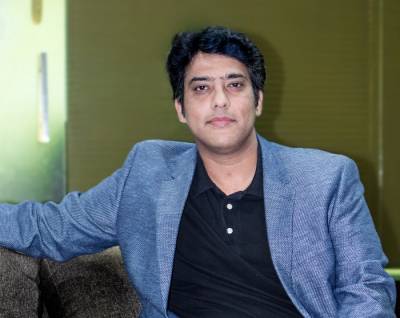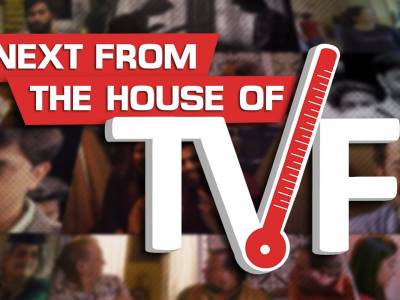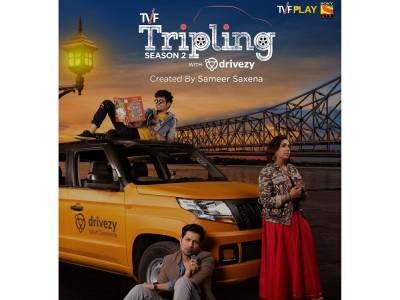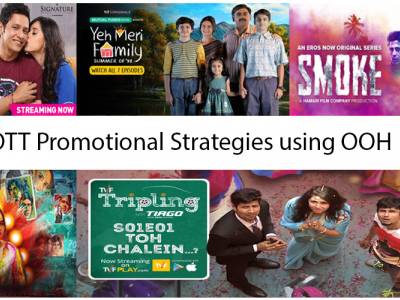TVF will never cross the line just to grab eyeballs: Sameer Saxena
The Viral Fever has today become an indelible part of the Indian youth’s life.TVF is now expanding its programming line up to include diverse content genres with the launch of innovative shows in the coming months. Spread across various formats and styles of storytelling, the new content offerings promise to include something for everyone and are sure to delight fans of TVF while enticing new viewers.
Since the dawn of digital content in India, TVF has been one of the frontrunners in creating path-breaking content by tapping different genres to bring to life innovative and relatable shows and sketches for audiences across the country. Going forward, on offer are fresh, new shows that will up the entertainment quotient. In addition to these, TVF is also bringing to its audiences new seasons of some of its most popular shows with the launch of ‘The Aam Aadmi Family Season 3’, ‘Flames Season 2’, ‘Fathers 2’ and ‘Humorously Yours 2’.
In conversation with Adgully, Sameer Saxena, Chief Content Officer and Head, TVF Originals, speaks at length about TVF’s content strategy, monetising policies, brand integration and much more. Excerpts:
How would you define TVF today – an OTT platform or a production house?
We are an OTT platform in a very unique way that makes content for ourselves and we also license out to other OTT platforms. For us, right now the fundamental reason behind doing this is we know that there is a wide range of audience that exists on SonyLIV, MX Player, Hotstar that is necessarily not the audience available on TV. When we put up ‘Tripling Season 2’ on TVF Play and on SonyLIV, we get fantastic numbers on both the platforms, which is a clear indication that there is hardly any overlap. We made ‘Yeh Hai Meri Family’, which we released on YouTube, TVF Play and also on Netflix. Our main focus is to make stories that reach out to a wider range of audience, in that way we are unique.
How do you decide on which shows to syndicate?
It depends from show to show. Netflix wanted ‘Yeh Hai Meri Family’, so we gave it to them. SonyLIV was interested in ‘Tripling Season 2’, so we gave it to them. Some of the other OTT platforms also stream ‘Tripling’. Eventually, it is something that works for both us and the platforms.
None of your shows have gated content, what is your monetising strategy?
It is quite simple; our content is either branded or slice-in-sketch. We have brands on board, even for our Sketches – from the shortest form of Sketches to the longest form of Sketches. If we don’t have brands on board, we are licensing out to OTT platforms. Our business module is as simple as that.
How do you strategise on the brand integrations?
Our intention is first to make the brand integration very organic and pure, we had made a lot of mistakes in the past, but we have learnt from them and the brands also have a better understanding now. It has been a learning process over the past 5 years. Because we are doing brand integrations day by day, we do it every day on our sketches and for our shows. We brainstorm as a team to create the best so that the audience loves it. And if we get a brand on board, we make sure it is integrated seamlessly, only then will it help the brand and the content, it is not just for the money. When brands work for TVF, they trust us and we make sure to live up to it.
TVF recently got funding of $5 million. Where do you intend to make this investment?
All the funding goes into content. We are going to make 25 Original shows.
What is the strategy behind making your own shows?
We don’t buy or license shows from outside. We have always believed in and will continue to make our own shows. When I say our own shows, we are not creating the shows all by ourselves, we collaborate with various creators and it goes through the TVF filter. For example, if a production house works with us in creating content, it will still be termed as a TVF Original. Anyone walking in here with an idea that matches our wavelength, we will produce it.
What are your views on regulating content in the digital space? How does TVF regulate its content?
I strongly believe in self-regulation and we at TVF have always believed that – as clichéd as it may sound – the primary focus should always be on telling good stories. If that story demands a certain treatment, we will go ahead and make it. If you look at our content, we have never crossed the line, we have never forced anything. Whatever stories we have told so far have been in that space. We will never cross the line just to grab eyeballs. If tomorrow a good story comes, which demands something, then why not? But we are very clear that it has to be story driven. Our strategy is to make good stories and whatever is needed for the story, we will do it. I believe in telling the story in the manner in which it should be told.
How have you seen this industry evolve in India?
When we started off, nobody in the industry thought that this medium would stay. This was 5-6 years ago, no one thought that there was something in this medium. People didn’t understand this medium – some still don’t. I remember we wanted to make shows like ‘Permanent Roommate’; we first talked to the TV channels and then film production houses – everybody told us that such content would not work with the audience. So, we tried on YouTube first as we thought it was a free platform. We realised that there was an audience for it and people were becoming aware of the digital platform. With people becoming more adaptive, we latched on to this platform, and now that everyone is on this platform, it has become the next big thing.
The change has had its own good things as well as bad things. Since a platform like YouTube is free and gives an opportunity to a lot of good content creators to put their content on YouTube, they are no longer dependent on television executives telling them that their content won’t work. However, the sad part is that some people have started making content just because they can’t make this kind of content on television or films – just because its free and there is no regulation, people feel that any kind of content will gain eyeballs and publicity. This, I believe, is wrong, but then it is very natural that when something is expanding, it will have its own pro’s and con’s as well.
Today, the audience is becoming aware of different genres and shows from all around the world on OTT platforms, due to which people have become a bit more open minded and are accepting a lot of new things. However, there still are a few OTT platforms that continue to make shows the same as those aired on television. Another major drawback is the casting on OTT shows, all these platforms think that by casting Bollywood biggies, the shows will garner more eyeballs.
What is your monetising strategy on YouTube?
We have a subscription plan for our international audience on TVF Play; outside India you have to pay a nominal fee to watch our shows and we got good response to it. However, there are no immediate plans to introduce a fee structure for India.
What are the main differences between content on OTT and those on television?
Television has a very different set of audiences that they cater to, while digital has its own set of audiences. Though an overlap does happen, the fiction shows that you see on TV work for a certain kind of audience, such as female viewers, who would probably not watch a show like ‘Game of Thrones’ on OTT. In my opinion, TV will continue as there is something there for everybody. But people who used to watch channels like Vh1 and MTV have now moved on to OTT platforms as they have realised that there are good stories told on digital.
You have huge subscriptions for each of your genres. What powers your marketing strategy?
We don’t make huge investments on marketing; our strategy is mostly targeted towards digital, so we use our channels’ social media handles. The digital platforms are used to market our shows. We do Facebook and Instagram as the eyeballs usually come through digital platforms.






















Share
Facebook
YouTube
Tweet
Twitter
LinkedIn